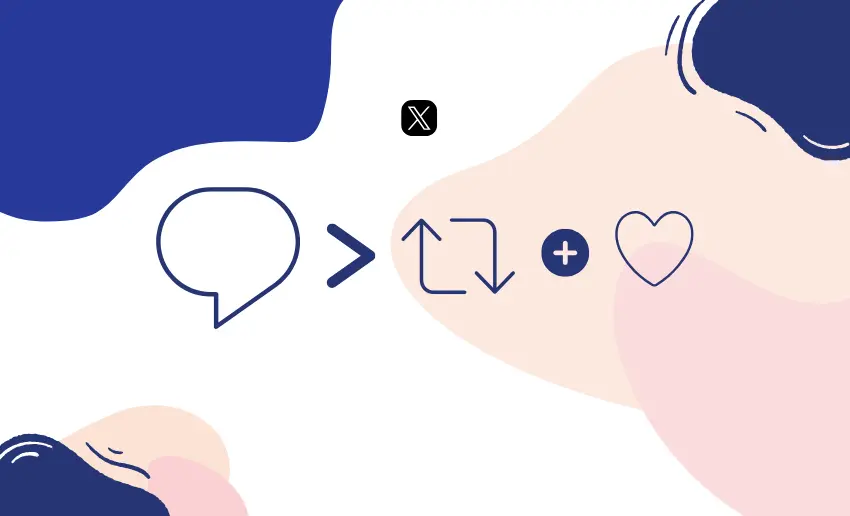Twitter moves fast and with millions of tweets shared every day, users often respond with quick likes, retweets, or replies. But if you spend enough time on the platform, you’ll start to notice terms that aren’t always easy to understand. One of those terms is “ratio.” You might see someone reply to a tweet with just the word “ratio” or hear others say a certain tweet got ratioed. But what does ‘ratio’ mean on Twitter?
Twitter has its own language, and understanding it helps you better follow what’s happening on the ever active social platform. From casual users to those working to grow their personal brands, knowing what “ratio” means can help you read the room and avoid digital backlash. In this post, we’ll explain what the term ‘ratio’ means on Twitter and why people use the term in both serious and humorous ways.
What does ratio mean on Twitter?
On Twitter, the word “ratio” is used to describe a situation where a tweet gets more replies than likes and retweets combined. This isn’t just about numbers, it’s a sign that people are reacting to what was said. It might be because the tweet is controversial, offensive, or simply unpopular.
In most cases, when a tweet is liked or retweeted a lot, it means people agree with it or find it interesting. But when the reply count is much higher than the likes and retweets, it usually means users are pushing back, disagreeing, or even criticizing the tweet. This is what people call being “ratioed on Twitter.”
The ratio acts like a red flag. It signals that something about the tweet has triggered strong responses, and in most cases not in a good way. In short, getting “ratioed” usually means your tweet didn’t land the way you hoped.
Where does the term “ratio on Twitter” originate from?
The term “ratio” on Twitter comes from how users measure the balance or imbalance between replies, likes, and retweets on a tweet. It started gaining popularity around 2017, when users began pointing out tweets that had far more replies than likes or retweets, using the word “ratio” as shorthand for this pattern.
Over time, the community noticed that if a tweet had a high number of replies and low likes, it usually meant the tweet was getting called out or argued with. The word “ratio” itself refers to the numerical relationship between these engagement types. So when someone says “you got ratioed,” they’re pointing out that your tweet sparked more debate or disagreement than approval. It’s now a common way to show that a post missed the mark.
Why do people say a tweet Is “ratioed”?
People say a tweet is “ratioed” when the number of replies is much higher than the combined numbers of likes and retweets. This pattern usually shows that many users are responding to disagree, correct, or criticize the tweet, rather than support it.
A healthy tweet often gets more likes and retweets than replies. But when a tweet sparks anger, confusion, or strong disagreement, people are more likely to reply than share it. That’s when it becomes “ratioed.”
Here are some common situations where tweets get ratioed:
- Unpopular opinions: If someone posts a strong or controversial view, especially on politics or social issues, it can quickly attract backlash.
- Insensitive comments: Tweets that come off as rude, dismissive, or tone-deaf often lead to a high volume of negative replies.
- False information: If a tweet shares something misleading, users might flood the replies with fact checks and corrections.
In all these cases, the tweet may get hundreds or thousands of replies while likes and retweets stay low. That’s the classic sign of a ratio.
How do you know you’ve been “ratioed” on Twitter?
You can tell you’ve been “ratioed” by simply looking at the numbers below your tweet or any other tweet. If your tweet has a lot more replies than likes and retweets (combined), that’s a clear sign. For example, if a tweet has 500 replies but only 50 likes and 20 retweets, it’s almost certainly been ratioed.
Twitter doesn’t send a warning when you’re ratioed, but the numbers speak for themselves. If your replies far outnumber your likes and retweets, especially within the first few hours of posting, it’s safe to say your tweet has been ratioed.
Being ratioed isn’t about getting attention, it’s about the kind of attention you’re getting. In most cases, a high reply count means people are disagreeing, criticizing, or mocking your tweet. If people liked your post, they would hit the like button or retweet it. But if they strongly disagree or want to argue, they’ll reply instead.
Is getting ratioed on Twitter bad?
While being ratioed on Twitter often signals backlash, the context matters. In most cases, it means your tweet sparked disagreement or controversy.
For creators whose aim is to ‘farm’ engagement even the kind that stirs up drama, then getting ratioed isn’t always bad. In fact, for some users, it’s part of the plan. When you post a controversial or polarizing tweet, a ratio often means people are paying attention, replying, quote-tweeting, and spreading your post far and wide. And on Twitter (now X), attention equals visibility.
Some content creators and accounts purposely post “hot takes” knowing they’ll get ratioed, because:
- Replies still boost the algorithm.
- Backlash draws more eyes.
- Controversy increases reach, impressions, and sometimes followers.
So, while the tone of the replies might be negative, the metrics (views, interactions, profile clicks) might actually work in your favor especially if you’re trying to grow fast or spark viral debates.
Also, certain Twitter accounts like brands, celebrities, or politicians are more likely to be ratioed simply because they post publicly about sensitive or high-stakes topics. These users often receive large amounts of replies, not necessarily because their content is bad, but because of the public interest or controversy their tweets attract.
How to avoid getting ratioed on Twitter
Getting ratioed can damage your online credibility, especially if you’re a brand, public figure, or trying to grow your presence. While not every disagreement is avoidable, there are smart ways to reduce the risk of being ratioed:
- Be clear and thoughtful: Before tweeting, make sure your message is easy to understand. Miscommunication is a major cause of negative replies. Avoid vague or sarcastic tweets that can be taken the wrong way.
- Know your audience: Understand who follows you and what content they expect. What works for one group might offend another. Stay aware of current conversations and trends to avoid sounding tone-deaf.
- Watch your tone: Even if your message is valid, an aggressive or dismissive tone can spark backlash. Use respectful language, especially when discussing sensitive topics.
- Avoid “hot takes” for attention: Posting controversial opinions just to go viral often leads to a ratio. Aim to add value to the conversation, not provoke outrage.
- Engage, don’t argue: If someone disagrees, don’t rush to fight back. Respond with clarity or move on. Thoughtful engagement earns more respect than defensiveness.
FAQs
What is ‘ratio’ in Gen Z slang?
In Gen Z slang, “ratio” goes beyond Twitter. It’s a way of saying that someone’s opinion or post is being rejected or shut down by the public. This use of “ratio” has spread beyond Twitter and is now common on platforms like TikTok, Instagram, and YouTube comments.
What is a good like to comment ratio on Twitter?
A healthy tweet typically has more likes and retweets than replies. While there’s no fixed number, a good ratio might look like 5 likes for every 1 reply. If replies start outnumbering likes and retweets, especially by a large margin, it may signal disagreement or controversy also known as being “ratioed.”
Is the term “Drag” the same as “Ratio” on Twitter?
Not exactly. “Dragging” someone means calling them out harshly or publicly shaming them, often with detailed criticism. A “ratio” focuses on the numbers mainly when replies outweigh likes and retweets. A tweet can be dragged and ratioed at the same time, but they aren’t the same thing.
In summary
The term “ratio” on Twitter refers to a situation where a tweet gets more replies than likes or retweets, often signaling disagreement or controversy. While being ratioed can be seen as a sign of backlash, it’s not always a negative outcome, it can also be part of playful, ironic Twitter culture. Understanding what “ratio” means helps users navigate Twitter with more awareness of how their posts might be received, allowing them to avoid unnecessary controversy or misunderstanding.







